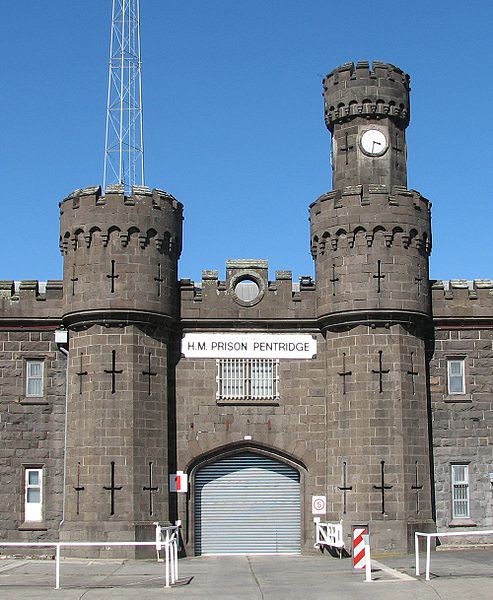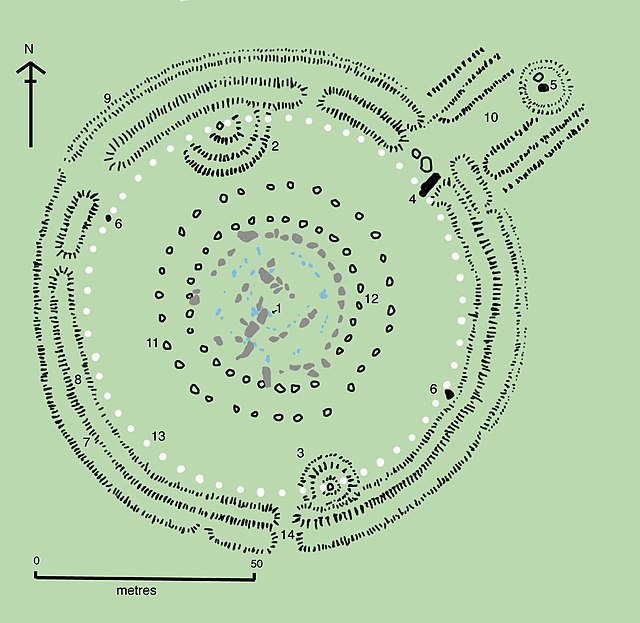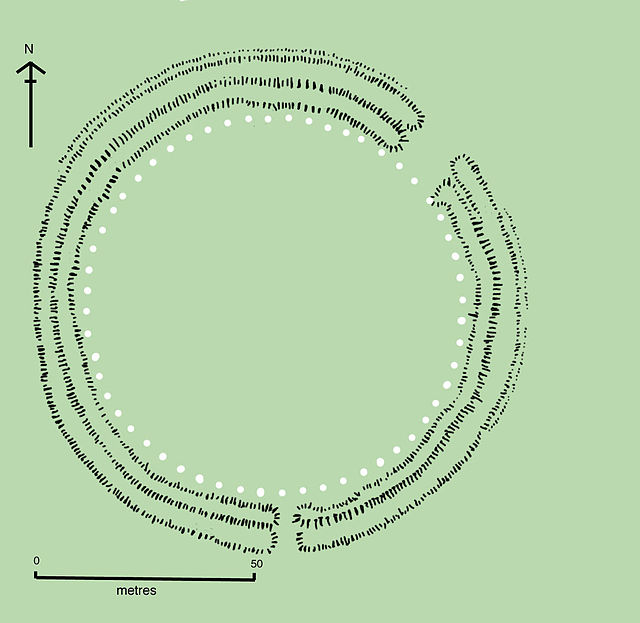Bluestone is a cultural or commercial name for a number of dimension or building stone varieties, including:basalt in Victoria, Australia, and in New Zealand
dolerites in Tasmania, Australia; and in Britain
feldspathic sandstone in the US and Canada
limestone in the Shenandoah Valley in the US, from the Hainaut quarries in Soignies, Belgium, and from quarries in County Carlow, County Galway and County Kilkenny in Ireland
slate in South Australia
Carn Menyn bluestones. These dolerite slabs, split by frost action, seem to be stacked ready for the taking, and many have been removed over the centuries for local use. Research favors the theory that humans also transported stones from Carn Menyn to Stonehenge, about 250 kilometers away.
Bluestone monument and Carn Menyn, Preseli Hills
HM Prison Pentridge was one of the many buildings constructed of local bluestone in Melbourne in the 19th century
Typical colouring caused by mineralisation in Adelaide bluestone
Stonehenge is a prehistoric megalithic structure on Salisbury Plain in Wiltshire, England, two miles (3 km) west of Amesbury. It consists of an outer ring of vertical sarsen standing stones, each around 13 feet (4.0 m) high, seven feet (2.1 m) wide, and weighing around 25 tons, topped by connecting horizontal lintel stones. Inside is a ring of smaller bluestones. Inside these are free-standing trilithons, two bulkier vertical sarsens joined by one lintel. The whole monument, now ruinous, is aligned towards the sunrise on the summer solstice and sunset on the winter solstice. The stones are set within earthworks in the middle of the densest complex of Neolithic and Bronze Age monuments in England, including several hundred tumuli.
Stonehenge in July 2007
Plan of Stonehenge in 2004. After Cleal et al. and Pitts. Italicised numbers in the text refer to the labels on this plan. Trilithon lintels omitted for clarity. Holes that no longer, or never, contained stones are shown as open circles. Stones visible today are shown coloured.
Stonehenge 1. After Cleal et al.
Graffiti on the sarsen stones include ancient carvings of a dagger and an axe.








